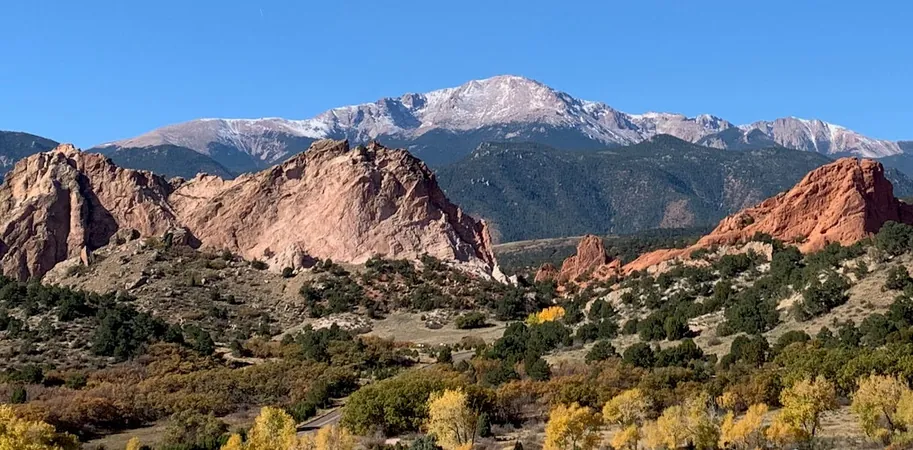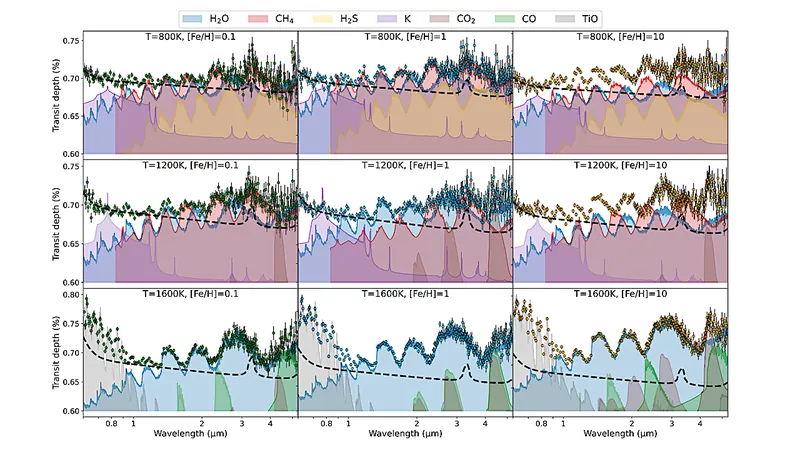
Unearthing Secrets of Snowball Earth: New Findings from Colorado's Pikes Peak Reveal Earth's Icy Past
2024-11-11
Author: Jia
Exploring the Mysteries of Pikes Peak
Pikes Peak, known as Tavá Kaa-vi by the Ute people, harbors rocks that are integral to understanding this ancient chapter of our planet's history. These solidified sand injectites were formed when sand-rich fluids were expelled into the surrounding rock under immense pressure, akin to a medical injection.
One hypothesis suggests that these peculiar sandstones were created by the overwhelming pressure of a Snowball Earth ice sheet forcing meltwater mixed with sediment into the weakened bedrock below. However, scientists faced a significant obstacle in dating these rocks, which is crucial for establishing when the right geological circumstances occurred for the sand injection.
To tackle this challenge, researchers examined iron veins alongside the Tava injectites near Pikes Peak—a method that leveraged advancements in laser-based radiometric dating. By analyzing the ratio of uranium to lead isotopes in hematite, a form of iron oxide, researchers were able to determine the age of the crystals.
Findings revealed that the hematite veins formed both before and after the sand was injected, forming a timeline that places the sand injectites’ formation between 690 million and 660 million years ago.
Tracing Earth’s Temperature Rollercoaster
This timeframe indicates that the sandstones were created during the Cryogenian Period, a time marked by extreme climatic upheaval and often associated with the Snowball Earth hypothesis. The term "Cryogenian," derived from the ancient Greek meaning "cold birth," reflects the planet's dramatic climate shifts during this era.
While the specific triggers for the extreme cold remain debated, theories include tectonic plate movements that released particles into the atmosphere, reflecting sunlight away from Earth. Eventually, an increase in carbon dioxide from volcanic activity may have contributed to the planet's warming.
The Tava injectites originated near the equator on an ancient landmass known as Laurentia, which has since shifted into its current northern location in North America due to long tectonic processes.
For over 125 years, the origin of Tava rocks has been a topic of contention among scientists. However, this latest technology-enabled discovery successfully links these formations to the Cryogenian Snowball Earth period for the first time.
Visualizing the Geological Process
Researchers propose a scenario where a massive ice sheet, possibly warmed by geothermal energy at its base, produced meltwater that mixed with quartz-rich sediment below. The sheer weight of the ice created immense pressure that drove the sandy fluid into the weakened bedrock, pioneering the formation of the injectites observed today, similar to modern fracking techniques used in oil and gas extraction.
Uncovering More Than Just Ice and Snow
The new findings not only reinforce the Snowball Earth hypothesis but also provide vital insights into other geological phenomena, such as the Great Unconformity—a significant gap in the rock record visible in places like the Grand Canyon, where over a billion years of geological history are missing. These unconformities result from prolonged erosion that prevents the formation of newer rock layers.
The research suggests that the Great Unconformity near Pikes Peak was established before the events of the Cryogenian Snowball Earth. This challenges previous ideas that attributed its formation to erosion caused by ice sheets during this polar crisis.
As scientists continue to unravel the enigmatic Cryogenian rocks of Colorado, there is hope that these findings will lead to additional discoveries about Snowball Earth. Such revelations could illuminate our understanding of Earth's history during extreme climate conditions and the evolutionary processes that set the stage for the thriving and diverse ecosystem we inhabit today.
Stay tuned as we delve deeper into Earth's icy past and prepare for even more astonishing revelations from our planet's ancient history!






 Brasil (PT)
Brasil (PT)
 Canada (EN)
Canada (EN)
 Chile (ES)
Chile (ES)
 España (ES)
España (ES)
 France (FR)
France (FR)
 Hong Kong (EN)
Hong Kong (EN)
 Italia (IT)
Italia (IT)
 日本 (JA)
日本 (JA)
 Magyarország (HU)
Magyarország (HU)
 Norge (NO)
Norge (NO)
 Polska (PL)
Polska (PL)
 Schweiz (DE)
Schweiz (DE)
 Singapore (EN)
Singapore (EN)
 Sverige (SV)
Sverige (SV)
 Suomi (FI)
Suomi (FI)
 Türkiye (TR)
Türkiye (TR)